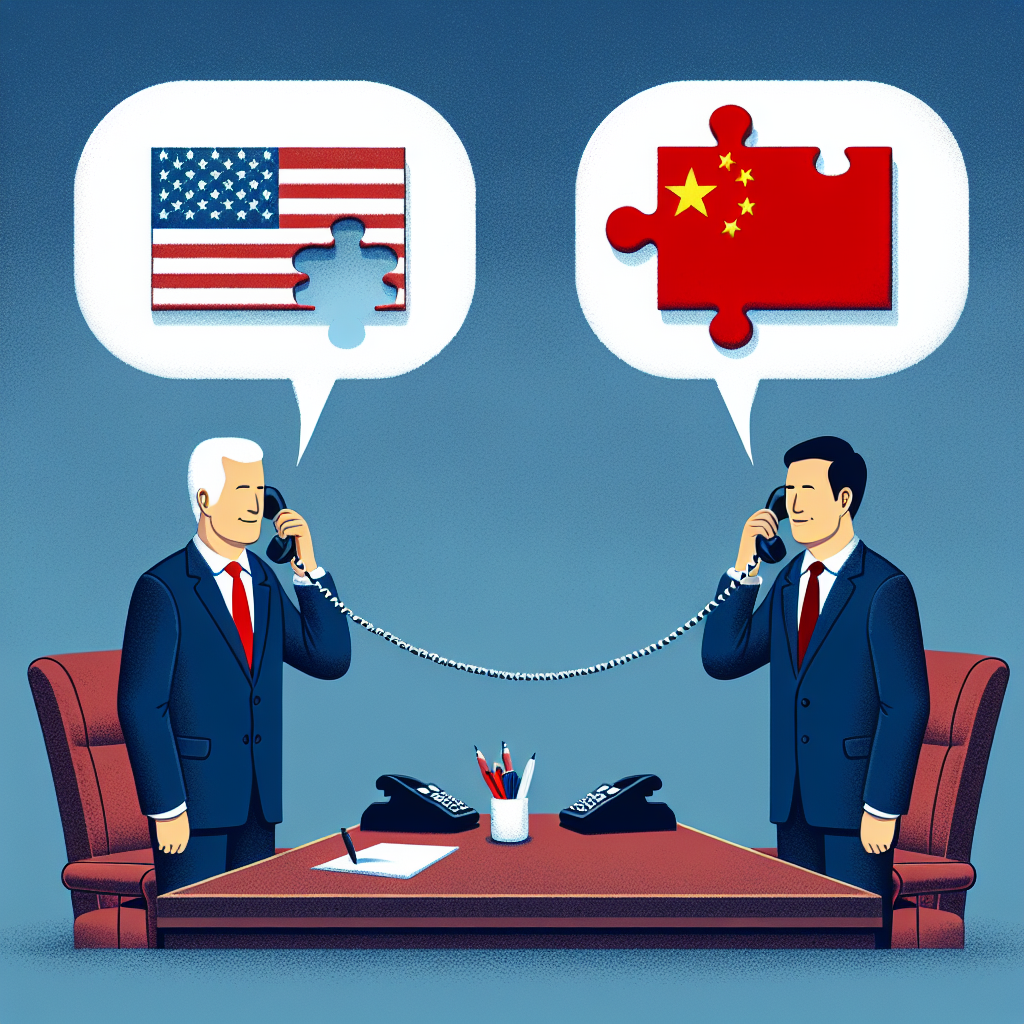The highest leaders of the United States and China conducted a call on trade issues, releasing positive messages. However, in comparison to their respective statements, a key piece of information was missing in the Chinese announcement – there was no mention of President Trump inviting Xi Jinping to visit the U.S., despite Xi already having agreed to the content.
Currently, the tense trade situation has led to instability in U.S.-China relations. This call marks the first formal contact between the two leaders since Trump took office earlier this year. The last call between Trump and Xi was just before the United States presidential inauguration in January.
In recent weeks, relations between China and the United States have deteriorated, with both sides accusing each other of violating a trade ceasefire agreement aimed at reducing high tariffs reached in Geneva.
Gerard DiPippo, Deputy Director of the RAND China Research Center, commented on the statements from both sides. Trump emphasized trade progress, rare earths, and state visits, but did not mention Taiwan at all. On the other hand, China emphasized that the U.S. had not complied with the agreement, issued a warning on Taiwan, but did not mention the rare earths issue.
“The U.S. tone appears more positive, as if export control issues are under discussion,” he wrote on the social media platform X. “In fact, upon reading it again, the Chinese statement is also quite positive, albeit not as lively in tone.”
In Trump’s statement on the social media platform “Truth Social,” he said, “I just had a very good call with Chinese President Xi, discussing some of the complex details of our recently reached and agreed-upon trade deal. The call lasted about an hour and a half and yielded very positive results for both countries.”
He also mentioned that both teams will soon meet at a location to be determined. The U.S. delegation includes Treasury Secretary Scott Bessent, Commerce Secretary Howard Lutnick, and U.S. Trade Representative Jamieson Greer.
The official Chinese announcement did not include detailed content.
The Chinese announcement stated that the two heads of state agreed for their respective teams to continue implementing the Geneva consensus and to conduct new rounds of talks as soon as possible.
It said, “Both sides must make good use of the established economic and trade negotiation mechanism… to strive for a win-win outcome,” and that “China is sincere, but also principled.”
Regarding the Geneva agreement, the announcement denied the U.S.’s accusation of China’s non-compliance, but in turn urged the U.S. to take the progress seriously and “revoke negative measures against China.”
Trump emphasized in his statement, “There should be no more doubts about the complexity of rare earth products.”
The recent key trigger between the U.S. and China is the rare earth issue. The U.S. accuses China of reneging on promises to relax controls on rare earth exports, essential materials for advanced electronic products.
During an Oval Office meeting with German Chancellor Friedrich Merz, Trump again mentioned that in the call with Xi they had already “resolved all the complex issues of the trade agreement.”
“I had a very pleasant conversation with Xi. We have resolved all the complex issues. It’s very complex, but we have resolved it,” said Trump. “I believe our progress with China and the trade agreement is going very smoothly. We must ensure that everyone understands the content of the agreement.”
Currently, it is unclear what other complex issues Trump referred to besides rare earths.
In his statement and in public, Trump stated that Xi invited him to visit China and he extended an invitation for Xi to visit the U.S. However, the Chinese announcement did not mention this.
Before the U.S. statement was released, China had already announced two hours earlier that the two leaders had spoken.
Trump’s statement indicated, “During the call, President Xi warmly invited me and the First Lady to visit China, and I extended an invitation as well. As the leaders of two great nations, we both look forward to such visits.”
The President added that he anticipates visiting China at some point in the future.
In the Oval Office, Trump told all present media, “By the way, he invited me to go to China, and I invited him here. We have both accepted the invitation. So I will go to China with the First Lady at some point, and he hopes to come to the U.S. with the First Lady of China.”
The Chinese announcement only mentioned Xi inviting Trump to visit China again, with Trump expressing gratitude, but it did not mention Xi being invited to visit the U.S.
Trump stated that the conversation almost entirely focused on trade and did not touch on Russia/Ukraine or Iran issues.
However, once again, the Chinese announcement included the Taiwan issue. It urged the U.S. to handle the Taiwan issue cautiously to avoid escalation into conflict between China and the U.S.
The Chinese announcement also mentioned that the U.S. is welcome to Chinese students for study.
There was no mention of the issue of Chinese students in Trump’s statement. On Thursday in the Oval Office, the President was asked by the media about this. Trump responded that Chinese students would be able to enter U.S. universities smoothly, and the U.S. also wants to admit foreign students, subject to scrutiny before entry.
U.S. Secretary of State Rubio announced last week that the U.S. plans to begin actively revoking visas for Chinese students and that those affected would be individuals “affiliated with or studying in critical areas with the Chinese Communist Party.” Rubio added that the U.S. will enhance security checks for “all future visa applications from the People’s Republic of China and Hong Kong.”

